Heritage pieces from the years 1906–1953 reflect the historical narrative of Van Cleef & Arpels, showcased at the latest exhibition in Paris
Author: Phuriwat Hirunrangsee | Photographer: Courtesy of Van Cleef & Arpels
Jul 02, 2024
"...Van Cleef & Arpels is widely recognised as a leading jewellery brand, with a rich history dating back to 1895. Indeed, there are remarkable legacy works that recount extraordinary stories, showcasing diverse styles and situations during the time when the brand created those masterpieces. The Van Cleef & Arpels Collection exhibition in Paris has carefully selected these remarkable pieces for display..."
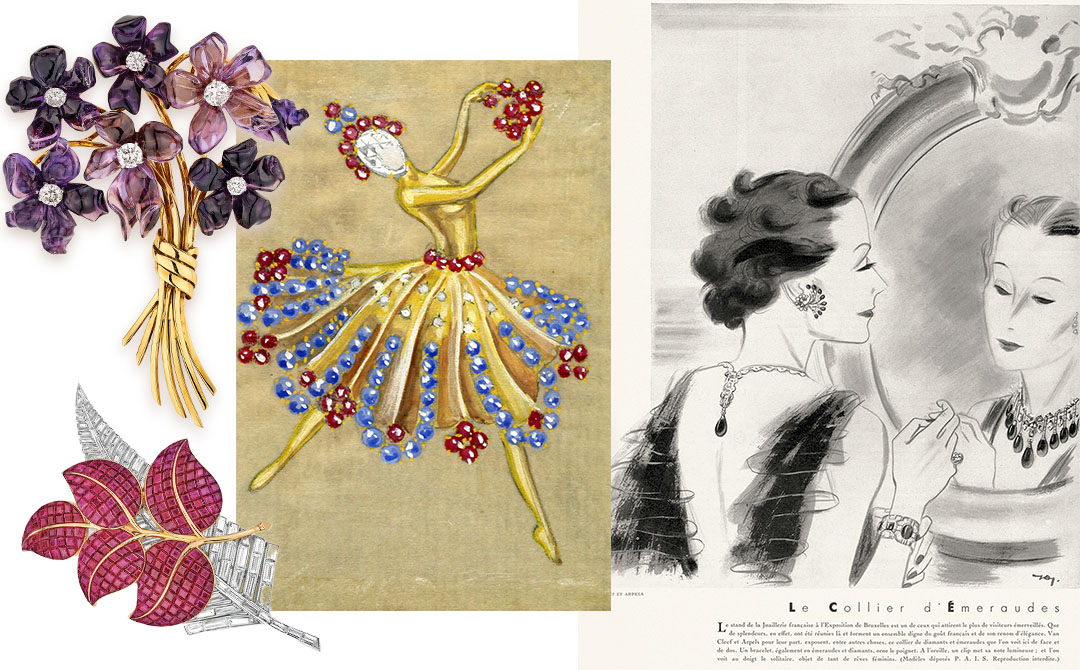
The Creative Boom (1906-1925)
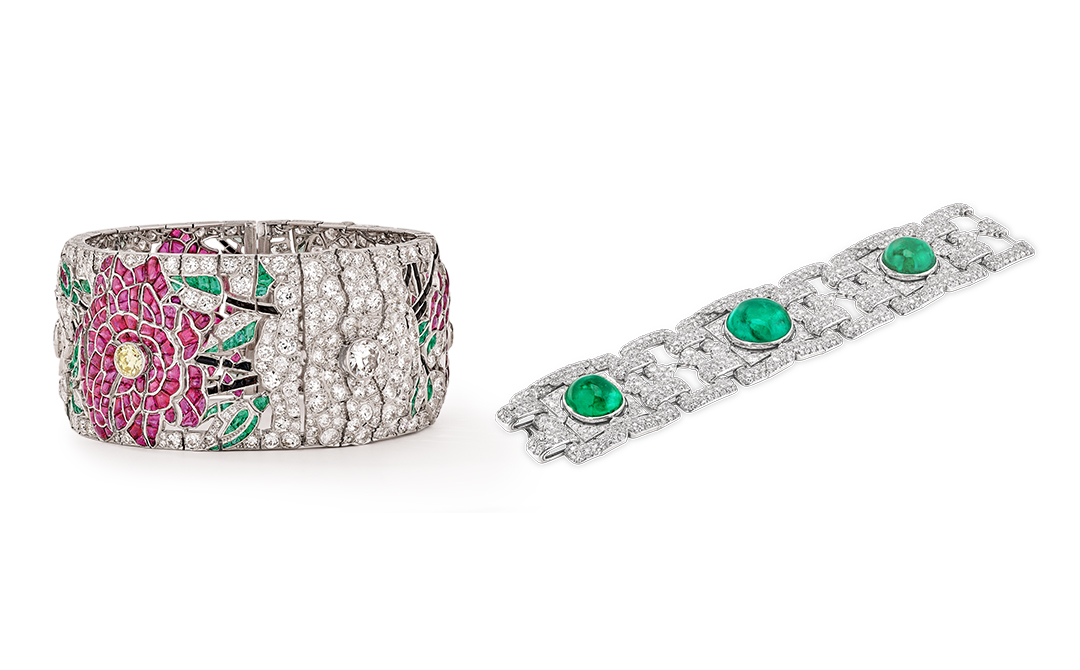
The initial section of this exhibition showcases artworks produced from 1906 to 1925. During the period, Van Cleef & Arpels became highly sought after by the elite, who requested numerous pieces of jewellery and decorative accessories. As a result, the business earned the nickname "leader of Vendôme" because the brand's boutique at 22 Place Vendôme consistently attracted a steady flow of customers. During this period, the works showcased the art and culture of the French jewellery brand, including exquisite pieces like the Entwined Flowers cuff bracelet and the Red and White Roses cuff bracelet. These bracelets displayed a captivating arrangement of rubies and diamonds, resembling intertwined roses. Onyx stems, fancy, intense yellow diamonds, and emerald embellishments further enhanced their allure. This stunning design evokes the beauty of art deco, showcasing the timeless allure of roses in French art and jewellery throughout history. Roses gained prominence in these artistic forms during the 18th century, and they resurfaced and gained popularity again in the 1910s. Jewellery design, in particular, embraced a shift from realistic depictions to more geometric and angular rose motifs. Additionally, there are bracelets featuring platinum cuffs adorned with a visually pleasing graphic design. Exquisite diamonds and emeralds, arranged in a symmetrical row of three, embellish this cuff.
A Unique Identity (1926-1937)
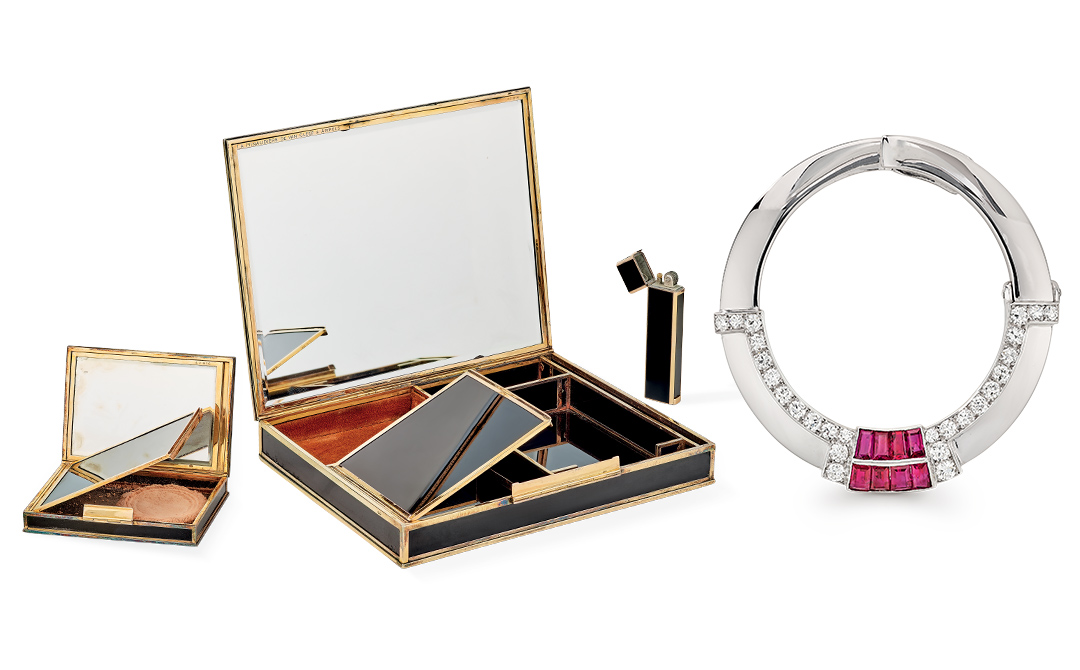
During this time, the brand's identity evolved significantly under the guidance of Renée Puissant, the daughter of Alfred and Esther, who served as the brand's artistic director. By creating distinct and individual products, the brand developed a modern design approach. The brand exclusively created timeless jewellery designs for women's accessories and decorative arts, such as the circle brooch from 1930 and the rectangular Minaudière clutch from 1933. They crafted the clutch from platinum or gold, lacquered it for a brilliant sheen, and studded it with jewels or diamonds.
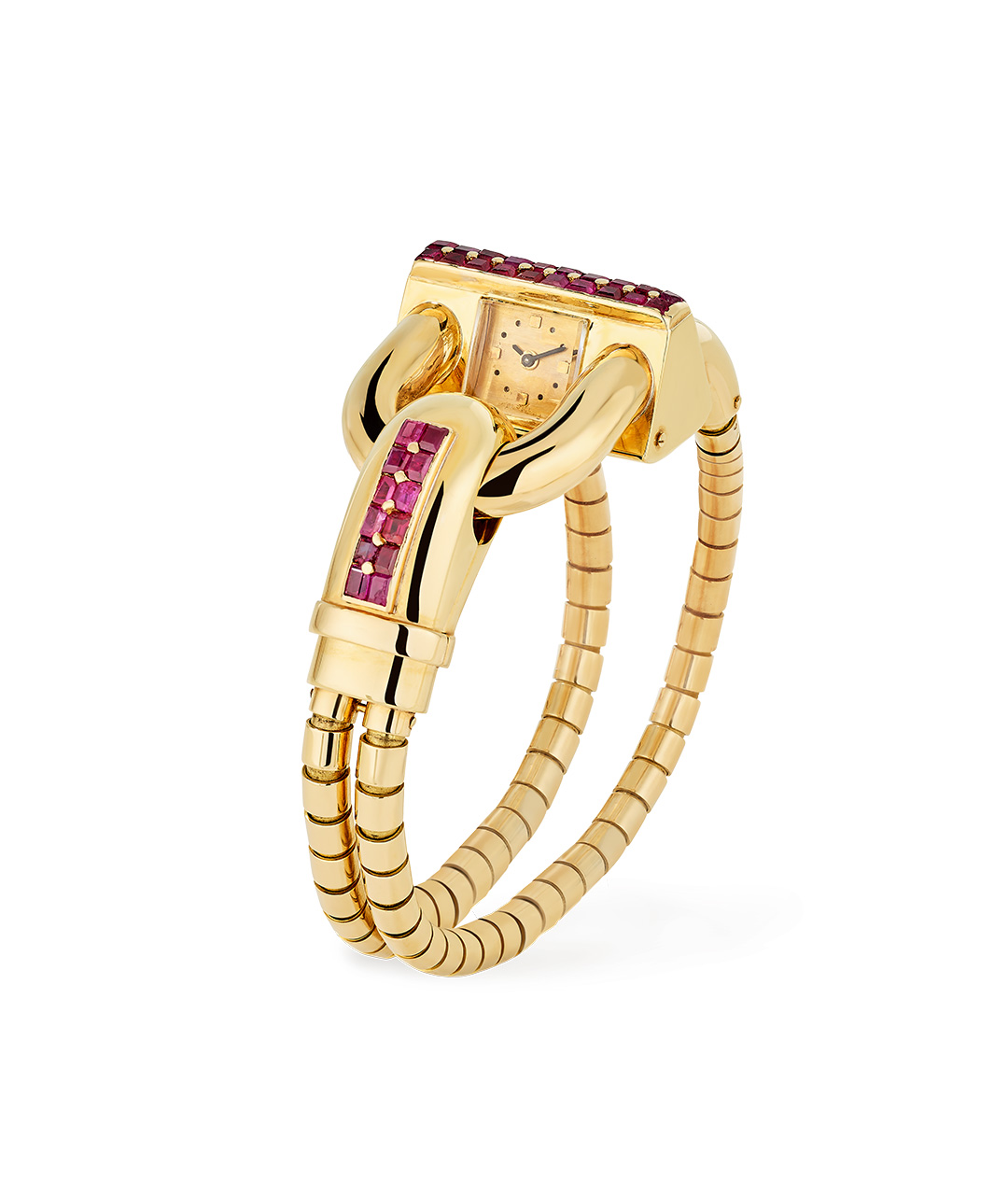
Moreover, Van Cleef & Arpels pioneered the iconic Cadenas watch design in 1935. The watch had a lock-shaped case with metal links extending from the base and connecting at the clasp, mimicking a bracelet but hiding a hidden watch dial. The watch face tilted towards the wearer for enhanced readability. Wristwatches were not popular among women at the time, thus, women's wristwatches had elegant, jewellery-like looks. Aside from developing unique designs, there were improvements in innovation and jewellery-making techniques that distinguished Van Cleef & Arpels as more avant-garde than other firms at the time.
From Paris to New York (1938 – 1953)

After the brand's exquisite pieces became popular in Paris, Van Cleef & Arpels decided to expand into the bustling metropolis of New York in the 1940s. The family's decision to settle in the United States led to the creation of several outstanding and memorable pieces. One notable piece was the 1937 peony brooch, a platinum and yellow gold brooch set with rubies, diamonds, to form a three-dimensional gem-set flower resembling natural botanical blooms. The brooch designed as a pair of interchangeable flower brooches, capable of changing shapes and colous for a variety of looks. Princess Faiza of Egypt once owned this brooch in 1946, and it currently resides in the Van Cleef & Arpels Collection.
Another precious was the Collaret necklace from 1939, a platinum mesh collar set with over 355 round diamonds and 318 baguette-cut diamonds. This masterful creation, once owned by Egypt's Queen Nazli, displayed beauty in all dimensions.
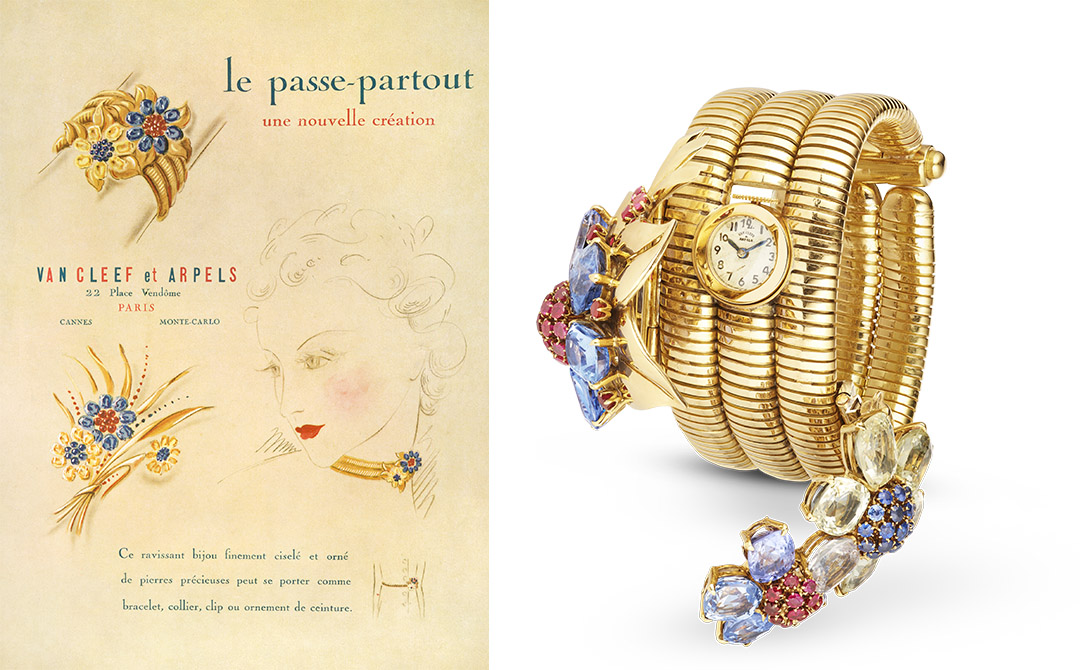
The Passe-Partout, a French term that translates to "master key," was another intriguing piece from this era. It described jewellery pieces that could transform depending on the needs of wearer. For instance, the 1939 wristwatch, featuring a yellow gold tubogas bracelet, was striking. The tubogas bracelet had unique properties that allowed it to stretch and contract, much like the spiral pipes of metal springs. The watch strap was notable for its adorned, flower-shaped diamond-set single and double flower motifs setted with rubies, sapphires, and diamonds. This design followed a popular art trend that aimed to make the flower petals appear as realistic and natural as possible. The flower-adorned pin on the watch strap could also serve as a one-of-a-kind flower brooch.
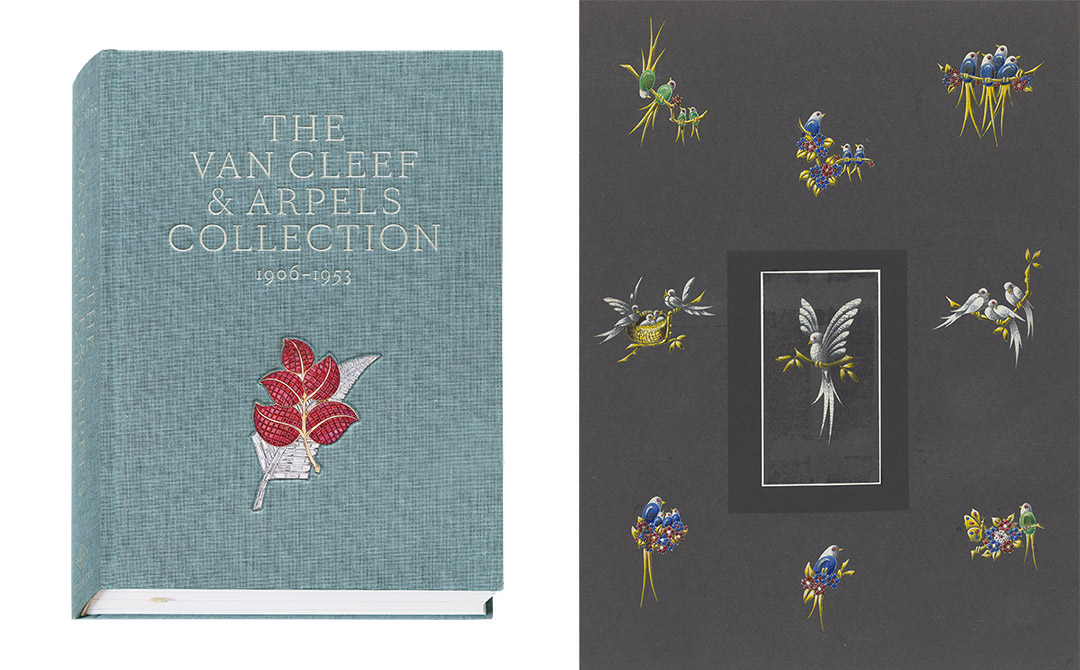 Each Van Cleef & Arpels exhibition, including legacy items, collects and organises the tales of major designs into booklets. This time, 'The Van Cleef & Arpels Collection' assembled over 700 jewellery pieces and 200 historical papers to produce a book that tells rich stories via intriguing designs.
Each Van Cleef & Arpels exhibition, including legacy items, collects and organises the tales of major designs into booklets. This time, 'The Van Cleef & Arpels Collection' assembled over 700 jewellery pieces and 200 historical papers to produce a book that tells rich stories via intriguing designs.
Also See: The Priceless Heritage of Swarovski at 'Masters of Light, from Vienna to Milan' Exhibition in Milan





























